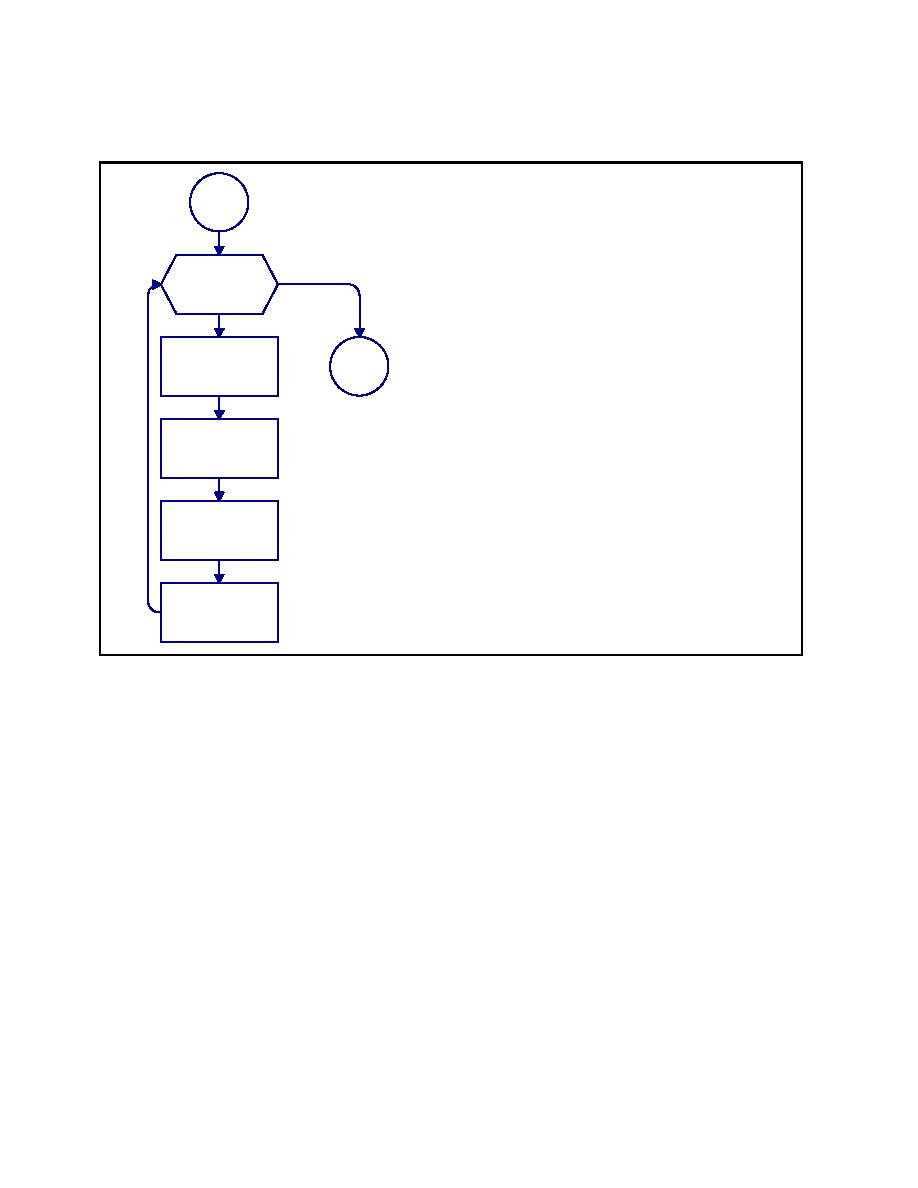

Custom Search
|
|

|
||
 MIL-HDBK-1013/12
<1> For Each Tactic. For the asset under
consideration, do <2> through <5> for each tactic
Start
identified on the Glazing System Tactic and
Threat Severity Level (TTSL) worksheet (see
Appendix B for all worksheets). When done,
return to Figure D-9.
<2> Identify Highest Threat Severity Level.
<1> For Each
No
Identify the highest threat severity level for a
Tactic
tactic across all aggressor types as indicated on
the TTSL worksheet. Proceed to <3>.
Yes
<3> Enter Design Basis Threat Severity Level.
Enter the design basis threat severity level for a
<2> Identify
tactic in the spaces provided at the bottom of the
Highest Threat
Stop
TTSL worksheet. Proceed to <4>.
Severity Level
<4> Transfer Threat Severity Level. Transfer the
threat severity level to the DCS worksheet by
entering the design basis threat severity level for
<3> Enter Design
a tactic in the spaces associated with the
Basis Threat
identified asset. Proceed to <5>.
Severity Level
<5> Determine Design Parameters. Refer to Table
D-30 to determine the design parameters (tools,
weapons, and explosives) associated with each
<4> Transfer
of the threat severity levels for each tactic. In
Threat Severity
tactics with multiple threat severity levels, each
Level
threat severity level also includes the tools,
weapons, and explosives from lower threat
severity levels.
<5> Determine
Design
Parameters
Figure D-18
Process Chart and Description: Tactics Consolidation Procedure
214
|
 
|
|
 |
||